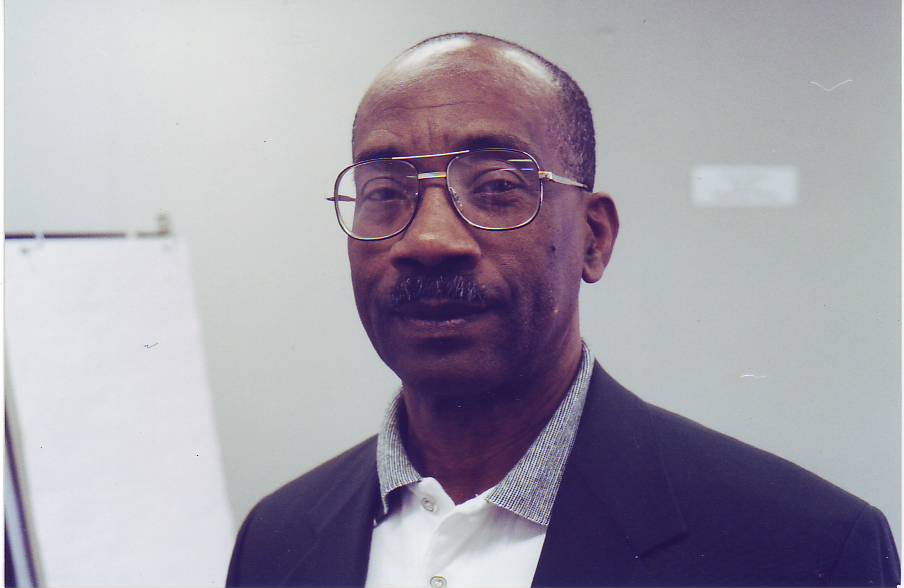Acclaimed golf aid developed by former Jane & Finch resident
Spending three hours every day – alone – over a two-year period hitting golf balls at Rancho Park in Los Angeles did not make much sense to onlookers and those close to Taly Williams.
“People thought I was crazy,” said the University of Waterloo graduate.
But there was a method to Williams’ perceived madness.
The environmental engineer and former Canadian Football League (CFL) free safety had just directed an ex-situ bioremediation process in England that won an Environmental Cleanup of the Year Award. He was also one of the two lead engineers on the Komex team that designed the first drinking water facility in the United States to comply with the State Department of Health Service requirements to remediate the gasoline additive chemical, Methyl Tertiary Butyl Ether (MTBE).
“After winning awards in the engineering field, I wanted to turn my attention to a problem in the field of athletics that would allow me to apply my engineering skills,” said Williams, who was born in the Jane & Finch neighbourhood to an Antiguan father and Canadian mother. “I asked myself what’s the hardest thing in sport to do and it came down to hitting a baseball fastball at 90 miles per hour or a little golf ball sitting on a tee.”
After each session at Rancho Park, Williams broke down every aspect of his swing that day with the aim of trying to develop motion-specific equations.
“Along the way, my swing got better and I started to filter through all the issues in golf in an attempt to come up with new and better swings,” he said. “Feeling good that my game was improving, I would go and play with my buddies only to find I could not hold up under pressure. What I discovered was that even though, mechanically, I had a good swing, it was still very difficult, no matter how good a golf swing you learn on the range, to transfer it to the course.”
Grasping that the greatest challenge in the sport is performing when it counts, Williams spent eight months using meditation techniques to figure out how he could get a golfer’s mind off the swing. This led him to develop a swing aid – The Taly Mind Set – that draws from the fields of mathematics, science, psychology and engineering and acts as a compass to guide a player through the swing.
With the unit strapped on the target arm and by focussing on an attached red ball, a player can visualize what Williams refers to as their ‘Talent Point’.
“We have patents around the world and it’s really a simple tool that’s now accepted as a great mechanical device,” he said. “When you put on my tool and you extend the red ball, instead of trying to hit the golf ball with your club, all you do is swing the red ball back behind you and then you just pass the red ball over the golf ball and it will pull your golf swing through on the proper plane. In that way, it takes your mind off hitting the golf ball. All you have to do is trust your talent.”
Several of the world’s top golfers have adopted the revolutionary new golf tool.
Based in California for the past 13 years, Williams will be recognized for his innovation with the African-American Golfer’s Digest (AAGD) Golf Training Aid of the Year Award. The prestigious prize will be presented during Masters Week in Augusta in early April.
“Taly is an innovator and successful businessman who has come up with a product that there is an overwhelming demand for,” said AAGD founder, president and editor-in-chief Debert Cook. “His product has received rave reviews and it has helped a lot of golfers as a very useful training aid.”
The Thistletown Collegiate Institute student and Chinguacousy Secondary School graduate was turned on to golf while he was a member of the Toronto Argonauts for a season before leaving in June 1995.
“I was invited to celebrity events with the team and that was my introduction to the sport,” said Williams whose short-lived professional football career ended in 1996 with the Hamilton Ti-Cats.
He graduated from a high school in Haliburton and spent time with his mother and four sisters before enrolling in the University of Waterloo where he ran track before the coach invited him to try out for the football team in his second year.
The university offers the best civil engineering undergraduate program in Canada.
“The reason I chose to do environmental engineering was that I did not want to go to a book and look up how to do something,” said Williams, whose sister, Lesley Tashlin, represented Canada in the 100-metre hurdles and the 4 x 100-metre sprint relay at the 1996 Atlanta Olympics. “In this field, there are always new emerging chemicals and environmental problems. What I did after university was look for environmental problems around the world.”






